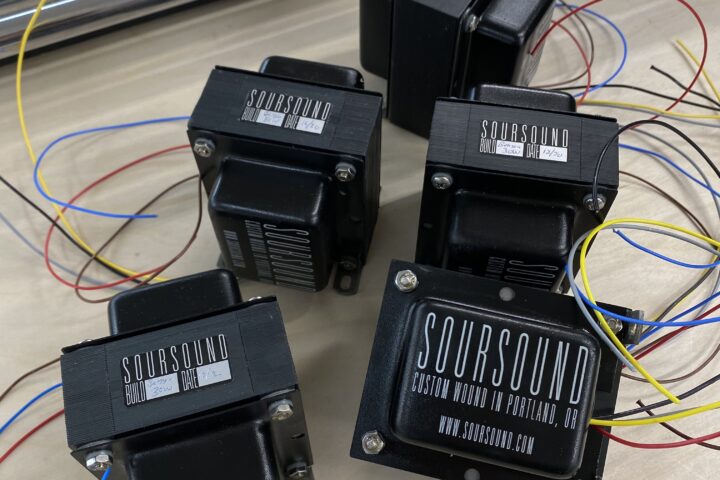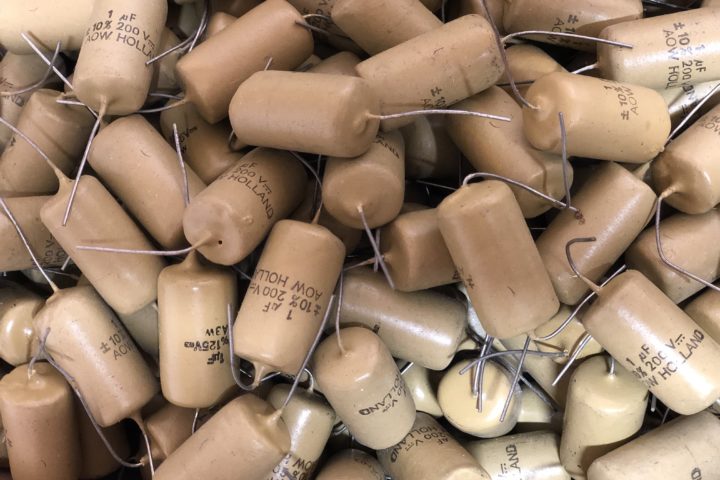Once a month, Erik Smith of Crow Hill Guitars delivers a new instrument from his shop in Iowa to a happy client. It could be an electric guitar, a bass, a flattop or a mandolin. Utilizing a pretty impressive reserve of exotic tonewoods, Smith will build just about anything his customers will dream up. On the day we called the Crow Hill workshop, Smith was putting the finishing touches on an 8-string electric ukulele.
Fretboard Journal: What’s on your bench?
Erik Smith: Right now, I have an 8-string electric ukulele. A customer called earlier in the year and wanted something different – he had bought a 4-string tenor [ukulele] last year. He wanted something that he could play through pedals. I suggested doing an 8-string and he jumped at it. When I was in Hawaii several years ago, I decided that my souvenir of choice was going to be a ukulele. After playing everything from a $20 ukulele to $1000 ukulele I decided that what I liked best was an 8-string. I had never even heard of such a thing before. It’s a tiny little instrument, but man, it’s got a lot of voice and dynamics that I was really drawn to.
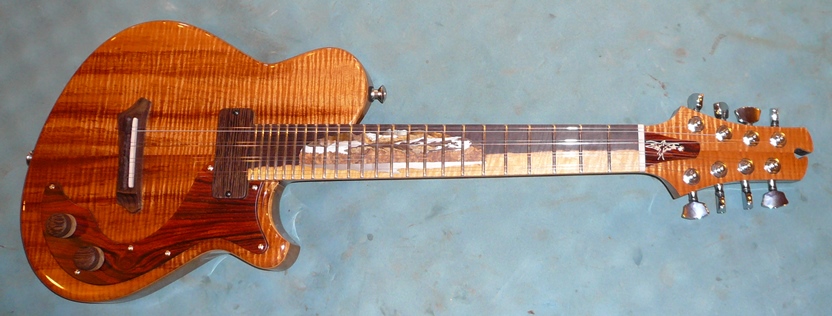 FJ: Can you tell me a little bit more about the string setup?
FJ: Can you tell me a little bit more about the string setup?
ES: Yeah, it’s four doubles, but it’s tuned like a 12-string guitar. So it’s a tenor. From top to bottom it’s G, C, E, A, so the G – the two Gs are octaves; the two Cs are octaves; and the E and the A are just doubles.
It’s a fun little thing. I built the one for the guy who ordered one and it actually shipped off today, and this is the second [uke]. They’re small enough and I had just the right amount of the wood that I doubled-up the order.
FJ: What kind of woods did you use?
ES: The neck and body are primarily Black Limba. There are laminates of Wenge in the neck, too. The body has a fairly thin top of some really curly koa and the fingerboard is Katalox.
FJ: What about the strings? How do you find electric ukulele strings?
ES: It’s basically just a nine-gauge electric set. So with the uniform bottom and the top, it’s 9s, 11s, 16, 8, and then 24 and 10.
FJ: Did you play the first one?
ES: Yeah, and I kind of have a bad habit. I play the guitars that I ship out quite a bit. One, ’cause I’m kind of greedy and like to play with them, but two, I think it kind of gives me a feel of knowing that everything’s right and knowing what the guitar is capable of.
So, yeah, I spend a little bit of time with it.
FJ: It’s a pretty important step, isn’t it?
ES: Yeah, I think so. All those little things count, from the appearance of the box, to how quickly it arrives to opening up the case for the first time. I think it’s kind of like falling in love with somebody – it’s little things or first impressions that count. Regardless of anything else down the road, it’s the first time you wrap your hands around the neck. If it feels good right then, then that means something to you on a level more than your typical off-the-shelf guitar.
FJ: Is it hard to let go of instruments?
ES: Yeah, for sure. I get to the point that I’m fairly well involved emotionally and by the time you put the amount on time into a guitar that it takes to make it something special, and I think you kind of embed a part of yourself into it.
FJ: How you got into guitar building?
ES: My dad always had a shop in our backyard. That was the place where I was always by far the happiest. He built pool tables when I was a kid. I remember sitting down, we had salvaged some ivory from piano keys, and we were doing the little diamond rail dots, and these quarter-sawn oak rails on there. And he was like, “You know, why don’t you do these inlays?” I don’t know how old I was, 10 or 12, maybe. I looked at him like, “What the hell am I supposed to do with that?” I just kind of figured it out and it went from there. I’ve always loved the woodworking side of it.
When I was older, I finally got to the point that I wanted to play guitar, and pretty immediately fell in love with it. So it was an easy step from loving the woodworking side to being completely enamored with guitars.
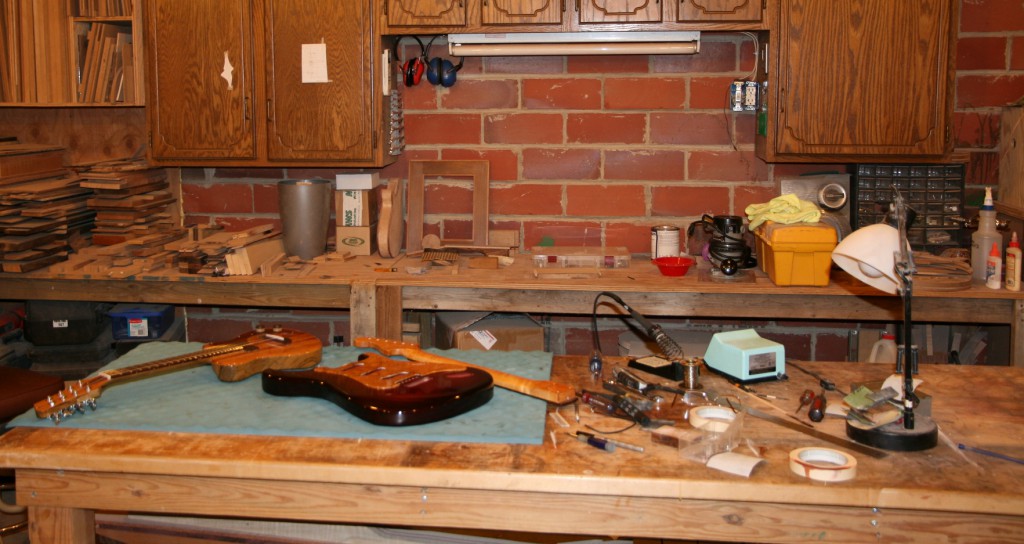 FJ: Was your dad a craftsman by trade or was it just a hobby?
FJ: Was your dad a craftsman by trade or was it just a hobby?
ES: Off-and-on. He had a pool table business for a long time, and with him I built lots of furniture, and that sort of thing.
FJ: Did you take classes anywhere?
ES: No, completely self-taught.
FJ: You build a wide range of fretted instruments, including ukes, electrics, flattops and basses. What’s your strategy with that?
ES: I think the customer base has figured out that I’m not the kind of guy that’s going to shy away from something, whether it’s wacky or it’s just something that I haven’t done before. I’ve been pretty fortunate to make stuff work and make stuff work extremely well. One of the first guitars that one of my best customers ever ordered from me was a nylon-string electric. He’s a classical player, and he wanted something to use for his duets and gigs. He complained that his amplified classical guitars didn’t sound very good coming through an amp and that the commercially available nylon electrics didn’t sound very good. The solution that we came up with was a fairly traditionally braced top on a completely hollowed-out, chambered Spanish cedar body. We put an undersaddle transducer pickup in it and it sounded surprisingly well for as experimental as it was. That’s the way that it’s been for me – try to ensure that the quality, originality and the customer service are on par to keep things going.
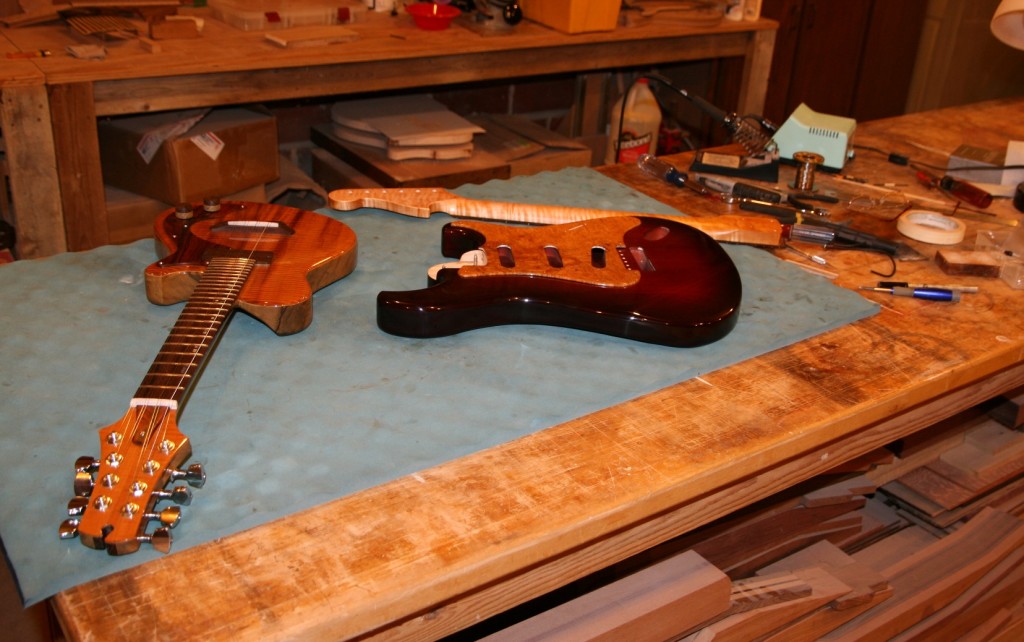 FJ: You have some beautiful and interesting tonewoods. Can you tell us a little bit about where you source from?
FJ: You have some beautiful and interesting tonewoods. Can you tell us a little bit about where you source from?
ES: I kind of scrounge wood wherever I possibly can. Whether it’s contacting other builders that I know might have like Rocky Mountain Blue Spruce, or salvaged redwood, or whatever it might be. I’ve also got a store that’s about an hour away from me. He’s an older guy, and he’s got just a pile of the craziest exotic stuff that you could imagine. It’s pretty easy to take that for granted, having that kind of resource, to be able to go down and hand-select everything.
